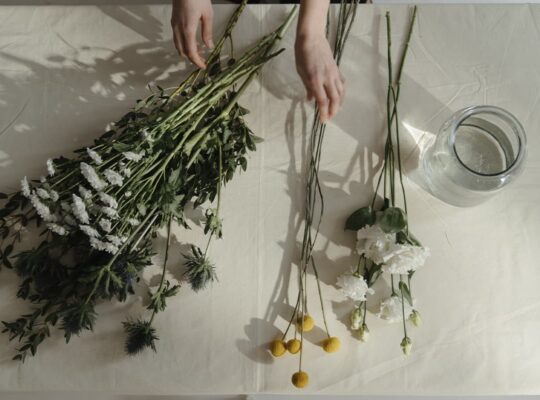The World of Heidi Horten hosted a charitable auction that showcased some of the most exquisite jewelry pieces adorned with floral motifs. Unlike many collectors of high jewelry masterpieces, such as Elizabeth Taylor or Lily Safra, whose biographies are often filled with multiple marriages, divorces, scandals, and even criminal investigations, Heidi Horten’s story is distinguished by its bourgeois stability and lack of drama.
Heidi first met her future husband, the German entrepreneur Helmut Horten, in 1958 while vacationing with her parents by one of the Austrian lakes. She was just 17 years old at the time, and Helmut, the founder of a chain of department stores, was 32 years her senior and several hundred million dollars richer. Although many might attribute their love to “love at first sight,” the couple waited eight years from their first meeting to their wedding, proving that their decision to marry was not impulsive but driven by a shared love for beauty. Heidi had a lifelong passion for music, theatre, and art, inspired by her father, a professional draftsman who painted landscapes and portraits of his daughter in his spare time.
Helmut, on the other hand, enjoyed a luxurious life, owning several houses, airplanes, yachts, and had an intense passion for art. Together, they spent over 20 years collecting exceptional works by Picasso, Chagall, Warhol, and other great artists until Helmut’s passing in 1987. After his death, Heidi continued their shared endeavor, significantly increasing their wealth.

Heidi’s collection of jewelry was equally impressive. Alongside the “Briolette of India,” she owned a Harry Winston pearl necklace with a pink diamond clasp, a ring adorned with yellow diamonds and emeralds created by Louis Comfort Tiffany in the early 20th century, a Van Cleef & Arpels flower-shaped brooch with diamonds and sapphires, and a stunning collection of Bulgari jewelry. And despite the fact that many items in the collection have long since fallen out of line with modern sustainable practices in the jewelry industry, they are valuable first and foremost from a cultural and historical perspective.

Van Cleef & Arpels’ flower-shaped brooch in yellow gold with diamonds and sapphires from the 1960s recently sold for 239,400 Swiss francs at an auction. This piece is a testament to the enduring appeal of floral motifs in jewelry. It is worth noting that even with the emerging trend to reduce the price of diamond jewelry, such pieces of high jewelry art are only growing in value.

In the world of contemporary jewelry, pieces like the Tweed Camélia collection from Chanel, inspired by the geometric perfection of the fragrance-less and thornless camellia flower, combine rose gold with diamonds and pink sapphires.

Another notable piece is the orchid brooch by Tiffany & Co., made from gold, enamel, and diamonds, harking back to the brand’s historical fascination with precious orchids created by designer Paulding Farnham in the late 19th century.
Farnham sent 24 precious orchids to the 1889 World’s Fair in Paris, each one encrusted with diamonds, emeralds, aquamarines, pearls, and rubies, showcasing the exquisite craftsmanship of Tiffany & Co.
Cindy Chao’s “Peony” brooch, created in 2018, is a masterpiece crafted from titanium, adorned with 2,485 rubies totaling 228.62 carats and white diamonds weighing 5.98 carats. The stamens are made from gold and coated with yellow lacquer. This jewelry piece was added to the Victoria and Albert Museum’s collection in London in the spring of 2021.

In a recent jewelry auction by Phillips in July 2022, a Mikimoto brooch in yellow gold with diamonds, colored enamel, and a pearl was sold for slightly over $5,000. A ring with a bird and flower motif in white and rose gold, featuring sapphires, emeralds, colorless and pink diamonds, as well as a 0.86-carat green diamond, went to a new owner for $6,700.

Floral themes in jewelry continue to captivate and inspire designers and collectors alike. Tiffany & Co. introduced a breathtaking floral brooch in their Botanica collection, made of yellow gold, enamel, and yellow diamonds, blurring the line between reality and artistry.
The highlight of recent days has been Queen Elizabeth II’s platinum jubilee. She was seen wearing a new brooch called the “Platinum Jubilee Brooch” at a ceremonial event at Windsor Castle. This stunning piece was a gift from The Goldsmiths’ Company, an organization dedicated to supporting artisan jewelers and consumer rights.
The brooch, designed by London jeweler David Marshall, is made of white gold, platinum, and adorned with 104 diamonds. The four flowers—rose, thistle, daffodil, and clover—symbolize the four nations of the United Kingdom: England, Scotland, Wales, and Northern Ireland. The seven diamond-studded ribbons represent the seven decades of Queen Elizabeth II’s reign. At the palace’s request, a lily of the valley was added to the precious bouquet, a flower that featured in the Queen’s coronation bouquet.
In conclusion, the world of jewelry is forever enchanted by the timeless beauty and elegance of floral motifs, with collectors like Heidi Horten and contemporary designers continuing to draw inspiration from nature’s floral wonders. These exquisite pieces stand as a testament to the enduring allure of floral-themed jewelry, bridging the gap between art and adornment.






